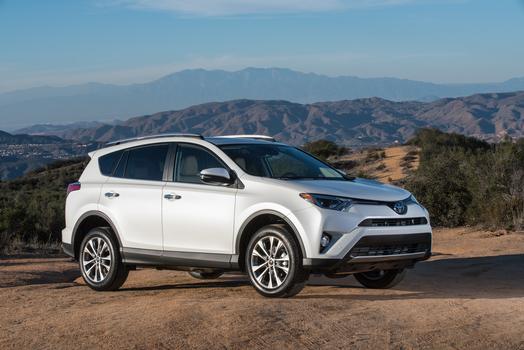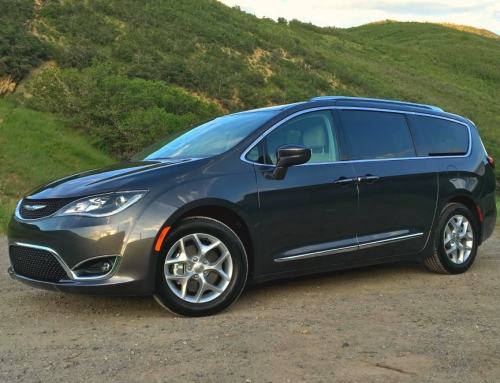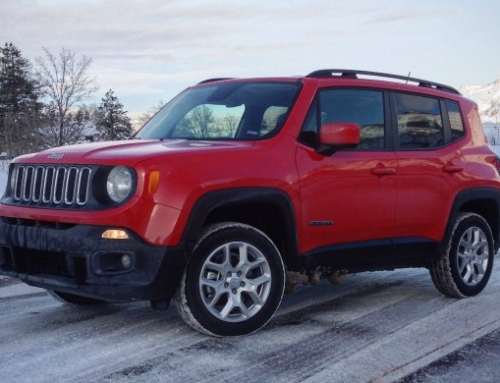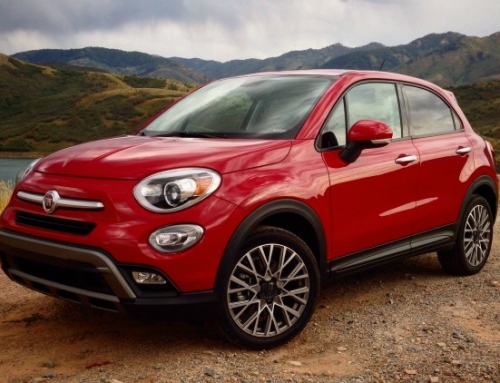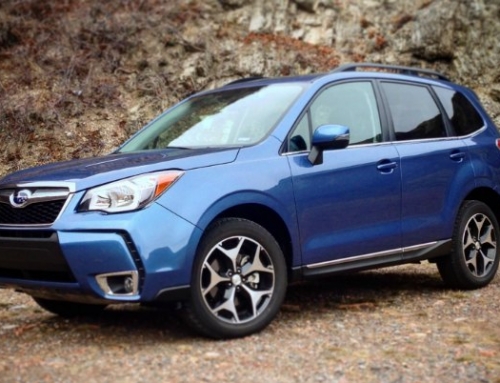If 2014 was the best year ever for the Toyota RAV4 with 267,698 vehicles sold, 2015 was a stunner. It was almost as if there were pent-up plans to capitalize on the last few years of the RAV4 before the latest update of one of America’s best-selling crossovers happened in 2016.
The final tally on 2015 sales was 315,412. That’s an 18 percent increase over 2014 and a whopping 84 percent increase over 2012 levels, the last year before Toyota refreshed the 2013 model.
The 2016 RAV4 is in stores now and models are moving well, yet not quite well enough to overtake the lead of the best-selling Honda CR-V. Still there are plenty of good reasons to drive the 2016 RAV4. Let’s take a look.
Reason #1: Updated styling and new trims on Toyota RAV4
The 2016 RAV4 is now available in six trims, doubling the number of choices available to buyers last year. I’ll cover the hybrid and sporty SE models below, so let’s focus first on the LE, XLE and Limited models.
Though Toyota redesigned the RAV4 in 2013, minor updates are visible on the 2016 model and include revised front and rear styling that make the vehicle ever-so-slightly more streamlined. At a time when Lexus models are getting the big grille treatment, it’s nice to see Toyota lean toward subtlety.
More obvious differences are visible in the headlight and taillight treatments. Viewed side by side, the lamps on the latest model are smaller and streamlined. To my eyes, it’s a better look. You can also choose optional LED headlights and running lights, standard LED taillights and three new colors.
I tested the Limited model and liked the leather-trimmed interior items. I recommended a co-worker test the latest RAV4 and he walked away disappointed by the basic interior of the spartan LE model. He liked the starting price of $24,350 for that model, but certainly preferred the higher-end interior of my Limited test model that started at $32,910 and topped $37,300 after options and delivery fees. If your budget can absorb the hit, I recommend the higher-end trims.
Reason #2: New hybrid and sporty models
There has never been a hybrid version of the RAV4 — until now. Toyota introduced the RAV4 Hybrid to great fanfare at the 2015 New York International Auto Show and TV ads soon appeared extolling the virtues of this fuel-efficient model. A 2.5-liter 4-cylinder engine and an electric motor generates 194 total horsepower and is paired with a Continuously Variable Transmission (CVT). This new model should return 34 mpg in city driving and 31 mpg on the highway for a combined 33 mpg average. That’s a big step up from the 24 city/31 city mpg projected in the standard RAV4. Plus, on-demand all-wheel drive is also available. It’s a sweet combination.
Toyota also offers a sporty new SE trim that offers a sport-tuned suspension, paddle shifters, revised front styling, standard LED headlights, and 18-inch aluminum wheels. Toyota also adds a black headliner and gunmetal-finish trim plus upgraded (perhaps slightly more sporty) instrumentation and SofTex leatherette seats and a power driver’s seat. While the SE certainly looks more sporty, it does not include the more powerful V6 engine that was available on the RAV4 a few years ago. Under the hood, you’ll find the 176-horsepower, 2.4-liter 4-cylinder engine that is standard on the LE, XLE and Limited models.
Reason #3: Toyota RAV4 offers better fuel economy but less power
I know many drivers who were fond of the 3.5-liter V6 engine available in the Toyota RAV4. Today, you have a single choice: a 2.5-liter four cylinder engine is standard on all models and it makes 176 horsepower and 172 pound-feet of torque. It’s mated to a six-speed automatic transmission and it averages 22 mpg in city driving and 29 mpg on the highway for a combined 25 mpg average. Just like the last time I tested the RAV4, I averaged 25 mpg.
Acceleration is adequate in daily driving, but it will never thrill you. I ended up testing a 2016 Volkswagen Tiguan the same week and there was no question that the 200-horsepower VW was more engaging to drive. But overall, the Toyota RAV4 is still the better vehicle and a smart choice for crossover buyers. Just don’t expect a sporty ride.
Reason #4: A Top Safety Pick+ rating and Toyota Safety Sense
Safety matters a great deal to buyers and Toyota remains committed to regularly improving its vehicles. In 2015, the RAV4 earned a “Top Safety Pick” rating from the Insurance Institute for Highway Safety (IIHS) after improving scores from “poor” to “good” on the small overlap front crash test. The 2016 model earned a “Top Safety Pick+” rating from the IIHS, an example of continuous improvement in action.
A rearview camera is standard and so are eight airbags. But the big news is that the RAV4 offers the new Toyota Safety Sense (TSS) package of technologies on all models and it’s standard for the Toyota RAV4 Limited and RAV4 Hybrid Limited models. Within the package, you’ll find Toyota’s adaptive cruise control system, a forward collision warning system, a lane departure warning system, automatic high-beam headlights and, importantly, a pre-collision system that identifies both objects and pedestrians and will stop the vehicle if an accident is likely.
My favorite safety feature is the available “birds-eye view” camera that creates a 360-degree view of your surroundings when you place the car into the reverse gear. It’s a feature first pioneered by Nissan and I’m glad to see it being incorporated into Toyota vehicles because it will certainly help prevent accidents while it saves lives. And the Perimeter Scan feature provides a rotating 360-degree view of your vehicle to help ensure you identify risks long before you bump into them.
Reason #5: Excellent reliability predicted by Consumer Reports
I generally encourage buyers exercise caution when buying vehicles within the first model year (or redesign) because recent changes may lead to unexpected reliability issues. In nearly all cases, vehicle manufacturers do an excellent job improving build quality and eliminating defects with each model year so vehicles regularly become more reliable as they mature through the manufacturing process.
According to Consumer Reports, that traditional level of caution isn’t necessary with the latest RAV4. Consumer Reports predicts that the latest Toyota RAV4 will prove “excellent” in terms of reliability and its dependability should prove to the be “much better than average.” That’s no surprise since the RAV4 has delivered “better than average” reliability since the 2009 model year and excellent reliability means you’ll have fewer unexpected engine, brake, transmission or power equipment issues and you’ll rarely have to visit your favorite mechanic.
Another strong step for Toyota
The RAV4 has always been a well-regarded, top-selling small crossover SUV. Yet it hasn’t been the best small SUV. This latest update helps it move closer to that mark. It’s still not as exciting to drive as the Mazda CX-5 or turbocharged Ford Escape. A little more juice in the engine would go a long way. The design fits within Toyota’s recent aggressive style, but I wouldn’t call the Toyota RAV4 today’s most attractive small SUV. Small quibbles aside, the RAV4 offers far more good than bad and with excellent safety and reliability ratings, plus smart and useful technology, RAV4 owners should drive far and wide without complaint.
